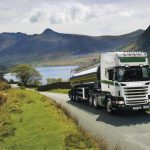In pursuit of perfection

What are heavy-equipment manufacturers doing to retain partners in the mining industry, as buyers endeavour to reduce costs? Gareth Greathead finds out.
With a fall in the price of commodities over the past few years, the mining industry has had to grapple with declining profits. Despite these challenges, shareholders want to see a return on investment, or they will take their money elsewhere.
In the past, optimising running costs associated with heavy equipment was not high on the agenda, due to the relative profitability of mining operations. However, since hitting hard times, heavy machinery has been identified as an area with the potential to save on operational costs.
Dave van Graan, head of special sales projects at MAN Automotive South Africa, explains: “Mines are under pressure to reduce the cost of every tonne moved. This is despite the ongoing upward cost pressures of better technology, equipment, higher running costs of the equipment and the increasing cost of labour.”
Improving overall efficiency, making adjustments to the vehicles, or extending the usable life of heavy equipment are three ways mines are improving operational profitability. This approach can help them retain and grow investor confidence, while bringing in the capital to purchase new technology.
Facing challenges head on
A challenging financial environment, together with advancements in technology, has sparked a process of mechanisation, better reporting and increased efficiency at mines around the world. This has changed what these buyers look for when shopping for heavy equipment.
“Of course, advanced technology often comes at a premium price, so we must ensure that we tailor every solution in a way that is relevant to the specific contract or situation. The total operating cost efficiency must be provable, with an ongoing target of reducing the delivered cost per tonne, kilometre or hour,” says Van Graan.
On other side of the coin, maximising return on investment, or what the industry refers to as “sweating of assets”, may be used to reduce capital expenditure, leaving more profit on the table.
Ruben Govender, segment manager at Scania South Africa, says: “For those mines that cannot afford to buy new vehicles, we have developed repair and maintenance contracts that forecast a fixed payment rate. In addition, warranties can be extended and service solutions tailor-made to suit customer needs.”
Some mines have chosen to outsource their transportation needs to contractors in an attempt to save money. Ian Marshall, product manager at Bell Equipment, importer of Kamaz trucks into South Africa, says: “These contractors are so pressurised by the low margins that they are experiencing extreme cash-flow constraints. A major challenge is getting them finance, and we use our knowledge of the sector to assist with financial planning.”
Understanding the supply chain
It is only through innovative solutions and close collaboration with customers that original equipment manufacturers (OEMs) can develop parts and technology suitable for the environment in which they operate.
Govender says: “Scania is seen as a partner, and through research and development we engineer our products to be stronger and more reliable. We share our findings with customers so that they can use our products at the highest efficiency possible.”
While equipment needs to be efficient and reliable, supply also needs to be sustainable and partners need to comply with the ethos of the purchaser. Van Graan says: “Purchasers of heavy equipment look for pedigree in the brands they purchase, which, in turn, looks to the track record of OEMs that supply to them over the long term.
The equipment selected must sustainably ensure sufficient production volumes, with up-time reliability being a key consideration.”
Efficiency
Research and development and sharing of information internationally leads to the development of parts that have a better design and last longer.
Barry van Staden, director at Autumn Star Trading, and importer of Astra Trucks, explains: “Articulated dump trucks (ADTs) are traditionally seen as the best solution for carting and haulage on open-pit mines, but we are working to change this mindset.
“After testing and receiving approval from our OEM, the axles on our 8×4 off-road tipper trucks sold locally were upgraded to increase payload to 40 t. This makes it a viable alternative to ADTs in certain environments, which are more costly to maintain and operate.”
Safety and technology
Mining is an inherently dangerous activity and mistakes can cost lives. Over the years, advancements in heavy-vehicle design and construction have made heavy vehicles safer and easier to use.
In-vehicle monitoring and telemetry, automation and autonomous systems improve reliability, productivity, efficiency and safety at the same time.
Van Graan says: “Mines are arguably the most serious proponents of safety, health, environment and quality (SHEQ) compliance – consequently, equipment deployed must satisfy the most stringent safety standards. Products supplied must have the capacity to support business solutions that enable detailed management of the hardware and operators.”
Maintenance
The development of maintenance schedules, that are suited to the use and environment in which the equipment is being used, can improve reliability, accessibility and uptime as well as help to prevent unscheduled maintenance.
Buyers look for manufacturers with service departments dedicated to keeping their equipment moving. This may come in the way of quick turnaround on repairs and maintenance, on-call technicians, training centres for in-house mechanics and contingency plans, or loan vehicles.
Considering the challenges faced by an industry where operational efficiency and safety are paramount, working together with a transport provider, manufacturer and
OEM can advance the industry in a tough economic environment.
Published by
Focus on Transport
focusmagsa




